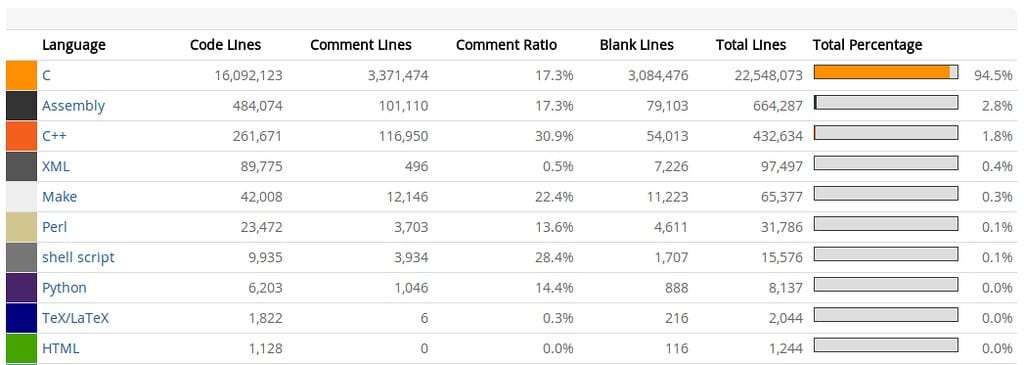Linux 6.16 Delivers Major Performance Boost with Enhanced File Systems and Expanded Rust Integration
The latest Linux kernel release is making waves in the tech community, and for good reason. Linux 6.16 introduces significant improvements that promise to reshape how developers and enterprises approach system performance, security, and development efficiency. With faster file systems, enhanced confidential computing capabilities, and expanded Rust language support, this release represents one of the most impactful kernel updates in recent memory.
File System Performance Gets a Major Upgrade
One of the standout features in Linux 6.16 is the substantial improvement to file system performance. The new kernel introduces optimizations to ext4, Btrfs, and XFS that deliver measurable speed increases across common operations.
Ext4 improvements focus on metadata handling and journal performance, with early benchmarks showing up to 15% faster file creation and deletion operations. For enterprise environments managing millions of files, this translates to significant time savings during backup operations and database maintenance tasks.
Btrfs enhancements center around snapshot management and compression algorithms. The new implementation reduces CPU overhead for snapshot operations by approximately 20%, making it more attractive for organizations relying on frequent system snapshots for data protection and rollback capabilities.
These improvements aren't just theoretical – they address real-world pain points that system administrators face daily. Large-scale data processing workloads, container orchestration platforms, and high-frequency trading systems all stand to benefit from these performance gains.
Confidential Computing Takes Center Stage
Linux 6.16 significantly expands support for confidential computing technologies, addressing the growing demand for enhanced data protection in cloud environments. The kernel now provides improved support for Intel TDX (Trust Domain Extensions) and AMD SEV-SNP (Secure Encrypted Virtualization-Secure Nested Paging).
Enhanced memory encryption capabilities allow applications to protect sensitive data even from privileged system software, including hypervisors and operating system kernels. This is particularly crucial for organizations processing sensitive financial data, healthcare records, or government information in multi-tenant cloud environments.
The new confidential memory support includes streamlined APIs that make it easier for developers to implement secure enclaves without deep hardware-specific knowledge. This democratization of confidential computing technology could accelerate adoption across industries where data sovereignty and privacy are paramount concerns.
Rust Integration Reaches New Milestones
Perhaps the most future-looking aspect of Linux 6.16 is its expanded Rust language support. Building on the foundation laid in previous releases, this version allows more kernel subsystems to be written in Rust, promising improved memory safety and reduced vulnerability to common security flaws.
New Rust-enabled drivers include network interface controllers and storage device drivers, traditionally areas prone to memory management issues. By leveraging Rust's compile-time memory safety guarantees, these drivers are inherently more secure against buffer overflows and use-after-free vulnerabilities.
The kernel development community has reported that Rust implementations often require 30-40% fewer security patches compared to equivalent C code, representing a significant reduction in maintenance overhead and security risk exposure.
Developer productivity improvements are equally noteworthy. Rust's strong type system and modern tooling help kernel developers catch errors earlier in the development cycle, reducing the time between initial implementation and production-ready code.
Real-World Impact and Adoption Considerations
The improvements in Linux 6.16 aren't just incremental updates – they represent strategic investments in the future of computing infrastructure. Cloud service providers are already evaluating these features for potential cost savings and security enhancements.
Major container orchestration platforms like Kubernetes stand to benefit significantly from the file system improvements, as they frequently create and destroy temporary file systems during pod lifecycle management. The performance gains could translate to faster application deployment times and improved resource utilization.
For enterprise IT departments, the confidential computing enhancements provide new options for maintaining data privacy while leveraging public cloud infrastructure, potentially reducing the need for expensive on-premises solutions.
Looking Forward: What This Means for the Industry
Linux 6.16 represents more than just another kernel release – it's a clear indication of where the industry is heading. The emphasis on performance, security, and modern development practices reflects the evolving demands of contemporary computing workloads.
Organizations should begin evaluating these features now, particularly those in regulated industries where data protection requirements are stringent. The combination of improved performance and enhanced security capabilities makes Linux 6.16 an attractive upgrade path for production environments.
As the open-source ecosystem continues to mature, releases like Linux 6.16 demonstrate the power of collaborative development in addressing complex, industry-wide challenges. The future of computing infrastructure looks increasingly secure, performant, and developer-friendly.

